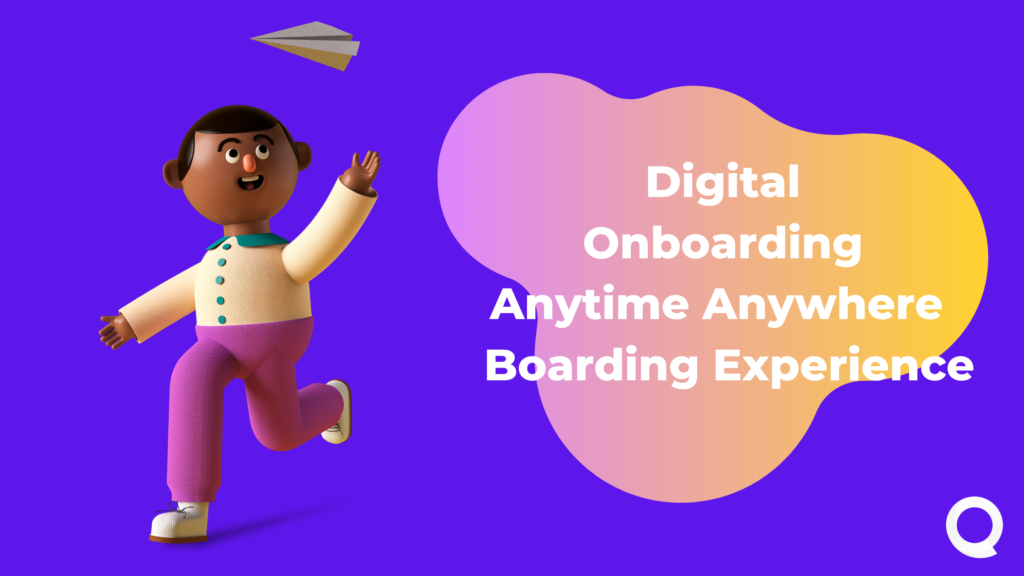Introduction
In the ever-evolving world of recruitment, the emphasis on hiring individuals whose attitudes align with company culture has never been greater. This paradigm shift from a sole focus on technical skills to a balanced consideration of attitude marks a significant evolution in hiring practices. The introduction of recruiter automation tools has further transformed the landscape, enabling a more streamlined, efficient, and effective recruitment process.
These advancements not only enhance the ability of HR professionals and recruiters to identify the best candidates but also ensure a fit that goes beyond the mere capabilities to perform job tasks. This guide aims to shed light on the pivotal role of attitude in the hiring process, presenting a curated list of the top 10 attitude assessment questions designed to uncover the true essence of a candidate’s personality and professional demeanor. Additionally, it introduces the concept of Quickboarding, a revolutionary approach to automating the hiring process, encompassing a range of assessments, KYC, and background checks, thereby facilitating a seamless transition for new hires into their roles.
Importance of Attitude Assessment
Attitude encompasses a range of attributes including adaptability, resilience, teamwork, and leadership potential—qualities that are indispensable for fostering a positive workplace culture and driving organizational success. Unlike technical skills, which can be acquired and honed over time, attitude is intrinsic and significantly harder to alter. Therefore, assessing a candidate’s attitude becomes a crucial step in predicting their long-term success and fit within an organization.

As the recruitment landscape becomes increasingly competitive, the adoption of recruiter automation tools represents a strategic advantage. These tools streamline the hiring process, from initial screening to final selection, ensuring that recruiters can focus on the nuances that make a candidate stand out. The integration of attitude assessment questions within this automated process allows for a deeper understanding of candidates, beyond what is evident from their resumes or technical skill assessments.
This guide is crafted with the aim of equipping recruiters, HR professionals, and CEOs with the knowledge and tools necessary to navigate the complexities of modern hiring. By focusing on the critical role of attitude in shaping team dynamics and organizational culture, and leveraging the power of recruitment automation and Quickboarding, companies can look forward to not just filling positions, but enriching their teams with truly exceptional individuals.
Why Attitude Matters in Hiring
In the dynamic realm of hiring, where the quest for the perfect candidate often hinges on a delicate balance between skill and cultural fit, the significance of attitude emerges as a cornerstone for long-term success. Attitude—a composite of an individual’s values, beliefs, and personality traits—plays a critical role in shaping not just the individual’s performance but also the collective ethos of the workplace. This section delves into the reasons why attitude is paramount in the hiring process and its profound impact on team dynamics and company culture.

Impact on Team Dynamics
The attitude of a single employee can have a ripple effect on the entire team, influencing morale, productivity, and ultimately, the success of projects. Positive attitudes foster a collaborative and supportive work environment, encouraging creativity, innovation, and a willingness to go the extra mile. Conversely, a negative attitude can lead to conflicts, decreased motivation, and a toxic workplace atmosphere, irrespective of the individual’s technical prowess. Therefore, assessing a candidate’s attitude towards work, challenges, and teamwork becomes pivotal in predicting their potential to contribute to positive team dynamics.
Influence on Company Culture
Company culture is the embodiment of the values, norms, and practices that define the way work gets done within an organization. Candidates whose attitudes align with the company culture are more likely to thrive, remain committed, and contribute to the organization’s objectives. They act as catalysts, reinforcing the desired culture and inspiring their peers to embody these ideals. In contrast, a misalignment between a candidate’s attitude and the company culture can hinder their integration and performance, regardless of their qualifications or experience.
Attitude vs. Skill: Balancing the Scales
While technical skills are undeniably important, they represent only one facet of a candidate’s overall profile. Skills can be developed and honed over time, but changing someone’s core attitude is significantly more challenging. This realization has led to a paradigm shift in recruitment, with an increasing number of companies placing equal, if not greater, emphasis on attitude. A candidate with the right attitude brings a willingness to learn, adapt, and grow, which in many cases, outweighs the immediate availability of technical skills.
The Strategic Advantage
Incorporating attitude assessment into the hiring process offers a strategic advantage, enabling companies to build teams that are not just skilled but also cohesive and aligned with the organizational vision. It facilitates the creation of a work environment where employees are engaged, motivated, and committed to their roles, driving innovation and sustaining competitive advantage.
In summary, the emphasis on attitude in hiring is more than a trend; it’s a strategic imperative. It recognizes that the long-term success of an organization hinges not just on the skills its employees possess but, more importantly, on their attitudes and how they resonate with the team and company culture. By prioritizing attitude alongside skills, companies can cultivate a workforce that is not only capable and efficient but also harmoniously aligned with their core values and objectives.
10 Effective Attitude Assessment Questions
In the quest to uncover the best fit for your team and organization, attitude assessment questions are invaluable. They delve into the core of a candidate’s personality, work ethic, and compatibility with your company culture. Here, we present the top 10 attitude assessment questions designed to provide deep insights into the candidates’ professional demeanor and potential for long-term success within your organization.
- Can you describe a time when you faced a significant challenge at work and how you handled it?
Answer Insight: Look for resilience, problem-solving skills, and a positive outlook. The candidate should demonstrate their ability to tackle challenges head-on and work towards a solution, showcasing their adaptability and perseverance. - How do you handle receiving constructive criticism?
Answer Insight: Seek candidates who view constructive criticism as an opportunity for growth and improvement. Their response should reflect a positive attitude towards learning and personal development. - Describe a situation where you had to work closely with someone whose personality was very different from yours.
Answer Insight: This question assesses adaptability and teamwork skills. A good response would highlight the candidate’s ability to find common ground, adapt their communication style, and work effectively in diverse teams. - Tell me about a time you went above and beyond for a project or team member.
Answer Insight: Look for examples of initiative, leadership, and a strong work ethic. The candidate’s answer should demonstrate their willingness to take extra steps to ensure success, reflecting their commitment and motivation. - How do you prioritize your work when you have multiple projects with the same deadline?
Answer Insight: This question evaluates organizational skills and the ability to handle stress. Effective responses will detail specific strategies for prioritization, time management, and negotiation for extensions if necessary, showing problem-solving and adaptability. - Give an example of a goal you set for yourself and how you achieved it.
Answer Insight: Candidates should exhibit goal-setting abilities, motivation, and the drive to achieve. The details of how they planned and executed their strategy to meet their goal will reveal their determination and self-discipline. - How do you stay motivated in repetitive tasks?
Answer Insight: This question explores the candidate’s intrinsic motivation and ability to maintain high performance in less stimulating tasks. Good answers might include setting personal milestones, finding aspects to learn from, or focusing on the task’s importance to the overall goal. - Can you tell me about a time when you had to give bad news to a team or supervisor?
Answer Insight: Communication skills and integrity are key. The candidate’s approach to delivering difficult news, ensuring clarity, empathy, and focusing on solutions, can demonstrate their maturity and professionalism. - How do you adapt to new technologies or changes in your work environment?
Answer Insight: This assesses adaptability and eagerness to learn. Candidates should show enthusiasm for growth and examples of past experiences where they successfully embraced change or new tools. - Describe a situation where you disagreed with a supervisor’s decision. What did you do?
Answer Insight: This question tests respect for authority, conflict resolution skills, and assertiveness. Effective responses should show the ability to professionally express dissent, seek common ground, or respectfully advocate for alternative solutions.
These questions are designed to cut through the surface and get to the heart of what makes a candidate tick in professional scenarios. Their answers provide a window into their approach to work, interpersonal relations, and personal growth, offering valuable clues to their potential fit within your team and organization.
Quickboarding: Revolutionizing Hiring and Onboarding
In today’s fast-paced business environment, the efficiency and effectiveness of hiring and onboarding processes are paramount. Traditional methods often involve time-consuming paperwork, manual assessments, and a lengthy onboarding period that can hinder both the organization’s productivity and the candidate’s experience. Enter Quickboarding—a revolutionary tool designed to transform the recruitment landscape by automating and streamlining these critical processes. This innovative solution not only accelerates hiring and onboarding but also enhances the overall experience for both recruiters and candidates.

Introduction to Quickboarding and Its Features
Quickboarding is a cutting-edge platform that leverages automation to simplify the complexities of hiring and onboarding. Its comprehensive suite of features includes automated assessments, digital KYC (Know Your Customer) verifications, background checks, and personalized onboarding pathways. By integrating these functionalities into a single platform, Quickboarding offers a holistic solution that addresses the end-to-end needs of the recruitment process. Its intuitive interface and customizable workflows allow organizations to tailor the platform to their specific requirements, ensuring a seamless fit with their existing HR systems.
Automating Assessments, KYC, and Background Checks
One of the standout features of Quickboarding is its ability to automate various types of assessments—ranging from skill-based tests to attitude and personality questionnaires. This automation ensures that candidates are evaluated comprehensively and objectively, facilitating better hiring decisions. Furthermore, Quickboarding’s digital KYC and background check capabilities streamline the verification process, reducing the time and resources traditionally required for these tasks. By automating these critical steps, Quickboarding significantly reduces the administrative burden on HR teams, allowing them to focus on more strategic aspects of recruitment.
The Impact of Quickboarding on Efficiency and Candidate Experience
Quickboarding’s impact on the efficiency of the hiring and onboarding process is profound. By automating routine tasks and consolidating multiple processes into a single platform, it drastically reduces the time to hire and onboard new employees. This acceleration not only improves the organization’s agility in filling key roles but also enhances the candidate experience. Quickboarding provides candidates with a smooth, engaging, and transparent journey from application to onboarding, setting a positive tone for their tenure with the company.
Moreover, the personalized onboarding experiences created by Quickboarding help new hires feel valued and integrated into the organization from day one. This tailored approach ensures that employees receive the information and training relevant to their roles, fostering a sense of belonging and engagement. The platform’s efficiency and focus on the candidate experience collectively lead to higher satisfaction rates, better retention, and a stronger employer brand.
Conclusion
Quickboarding represents a paradigm shift in how organizations approach hiring and onboarding. By harnessing the power of automation and technology, it offers a solution that not only streamlines these processes but also elevates the experience for all stakeholders involved. As companies continue to navigate the challenges of attracting and retaining top talent, tools like Quickboarding will play a crucial role in revolutionizing recruitment strategies, ensuring that organizations remain competitive and agile in the talent market.
Quickboarding is not just about efficiency; it’s about creating a foundation for long-term success by investing in a positive and engaging start for new hires. As we move forward, the adoption of such innovative solutions will undoubtedly become a hallmark of forward-thinking organizations dedicated to excellence in recruitment and employee engagement.

